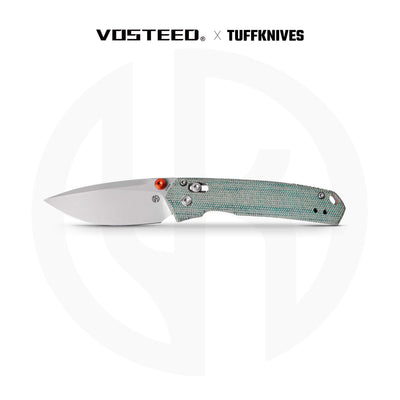Unlock the Secrets: Mastering the Art of Folding Knives for Self-Defense!
In a world where personal safety is increasingly a priority, self-defense has become an essential skill for many individuals. Among various self-defense tools, folding knives stand out as a practical and versatile option. Their compact design and ease of use make them accessible for everyday carry, while still offering a level of protection when needed. This article aims to educate readers on the best practices and considerations for effectively using folding knives for self-defense, ensuring that you are well-informed and prepared should you ever find yourself in a threatening situation.

Understanding Folding Knives
Folding knives are versatile tools characterized by their retractable blades, which provide safety and convenience. Unlike fixed-blade knives, folding knives can be easily carried in pockets or bags without the risk of accidental injury. The advantages of using a folding knife for self-defense include their discreet nature, making them less intimidating in everyday situations, and their readiness for use at a moment's notice. There are various types of folding knives, including liner locks, frame locks, and thumb stud mechanisms, each with distinct features that cater to different preferences and scenarios. Understanding these characteristics is crucial for selecting the right folding knife for your needs.
Legal Considerations for Carrying Folding Knives
Before carrying a folding knife for self-defense, it is vital to understand the legal landscape surrounding these tools. Laws can vary significantly from one region to another, and what is permissible in one location may be illegal in another. Generally, it is important to know whether your folding knife is classified as a weapon or a tool, as this can influence its legality. Responsible ownership entails being aware of local laws regarding blade length, carry methods, and usage. Always ensure that you comply with these regulations to avoid legal repercussions and to practice responsible self-defense.
Best Practices for Using Folding Knives in Self-Defense
Effectively using a folding knife in self-defense requires knowledge and practice. Essential techniques include maintaining a strong grip, understanding how to deploy the blade quickly, and being aware of your surroundings. Situational awareness plays a crucial role in self-defense; recognizing potential threats before they escalate can provide an advantage. De-escalation tactics, such as using verbal communication to diffuse a situation, should also be prioritized. Moreover, consistent training is vital. Many individuals, including friends I know who have taken self-defense classes, emphasize the importance of regular practice to build confidence and proficiency with a folding knife.
Maintaining Your Folding Knife
To ensure that your folding knife is reliable when you need it most, proper maintenance is essential. Regular cleaning helps prevent corrosion and keeps the blade sharp. It's advisable to wipe down the blade after use and lubricate the pivot points periodically to ensure smooth operation. Sharpening your knife is another crucial aspect; a dull blade can hinder your ability to defend yourself effectively. Finally, proper storage of your folding knife, ideally in a secure and easily accessible location, will help protect it from damage and ensure it’s ready for use whenever necessary.
Final Thoughts on Folding Knives for Self-Defense
In summary, understanding the role of folding knives in self-defense encompasses knowledge of the knives themselves, legal considerations, effective usage strategies, and maintenance practices. By educating yourself on these key points, you can ensure that you are prepared for any situation that may arise. Remember, responsible ownership includes knowing the laws in your area, practicing regularly, and maintaining your tool. As you explore the world of folding knives, take the initiative to educate yourself further and consider seeking training opportunities to enhance your skills.







